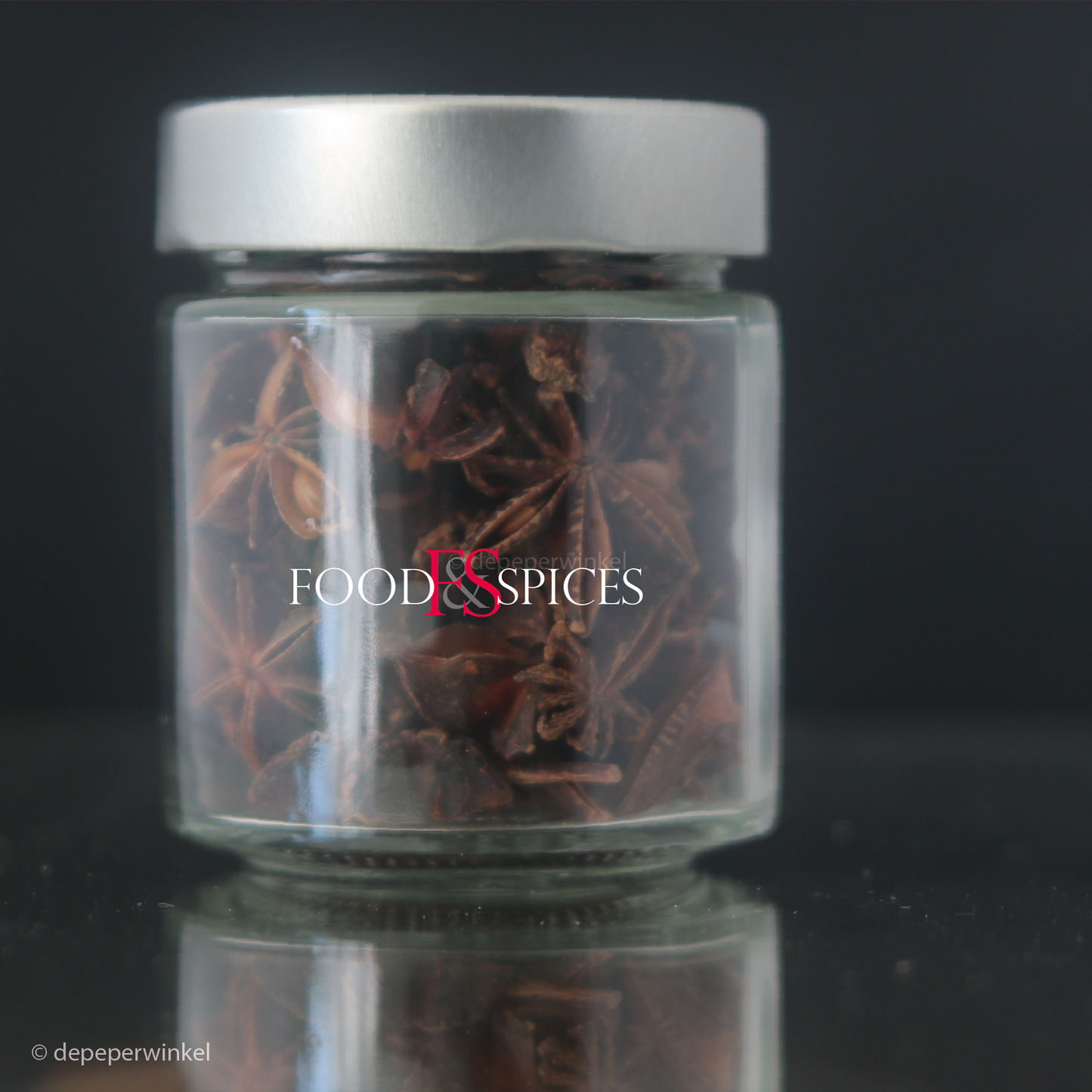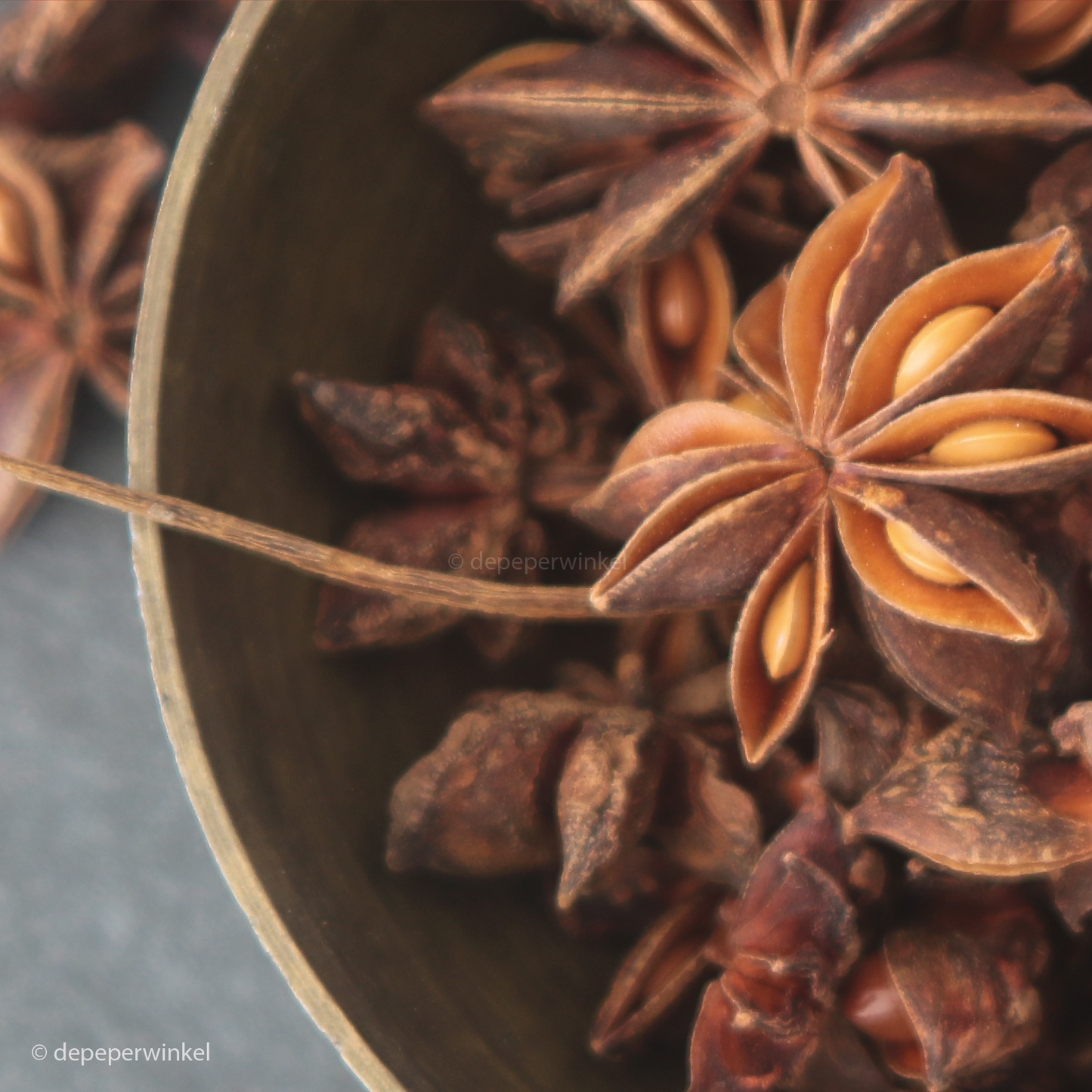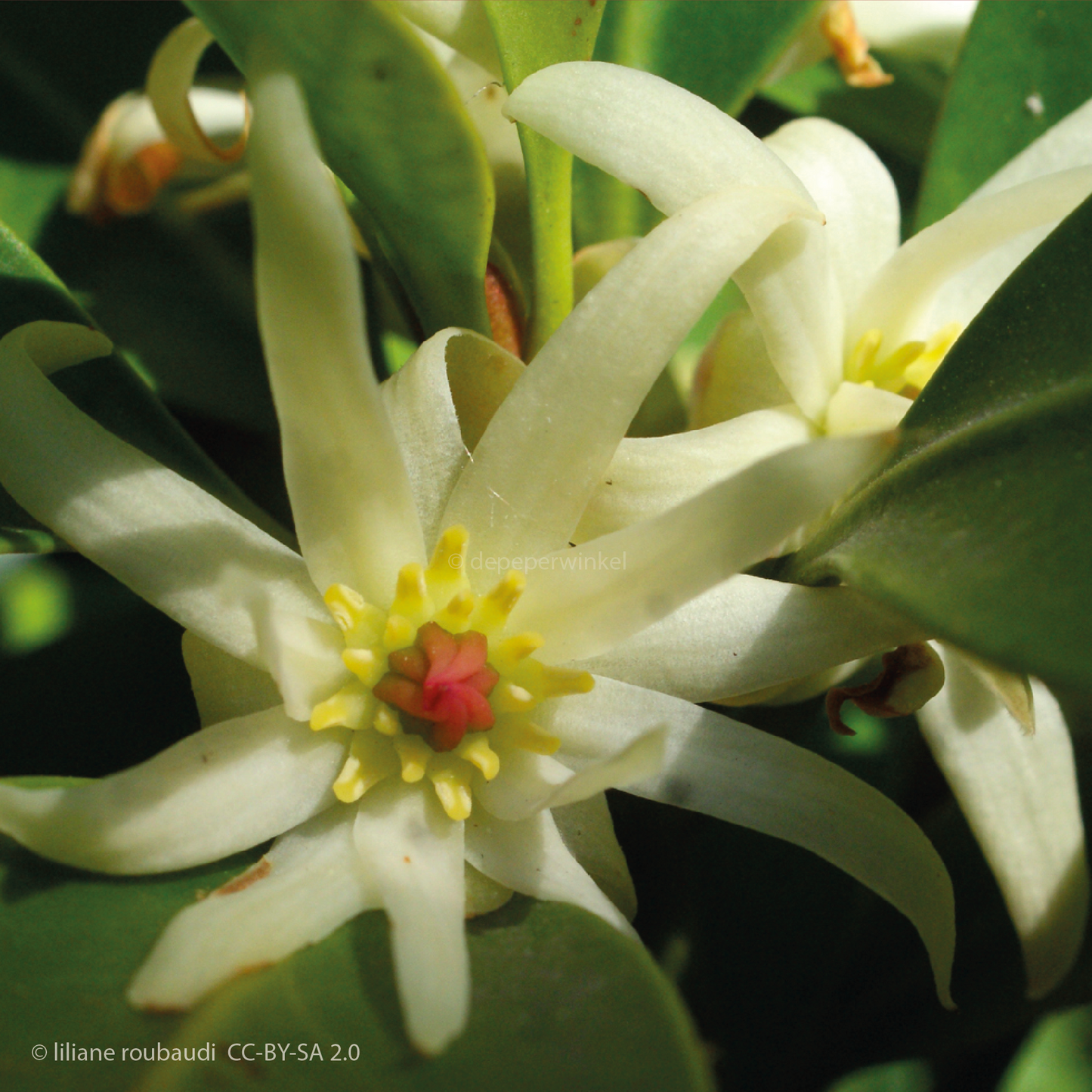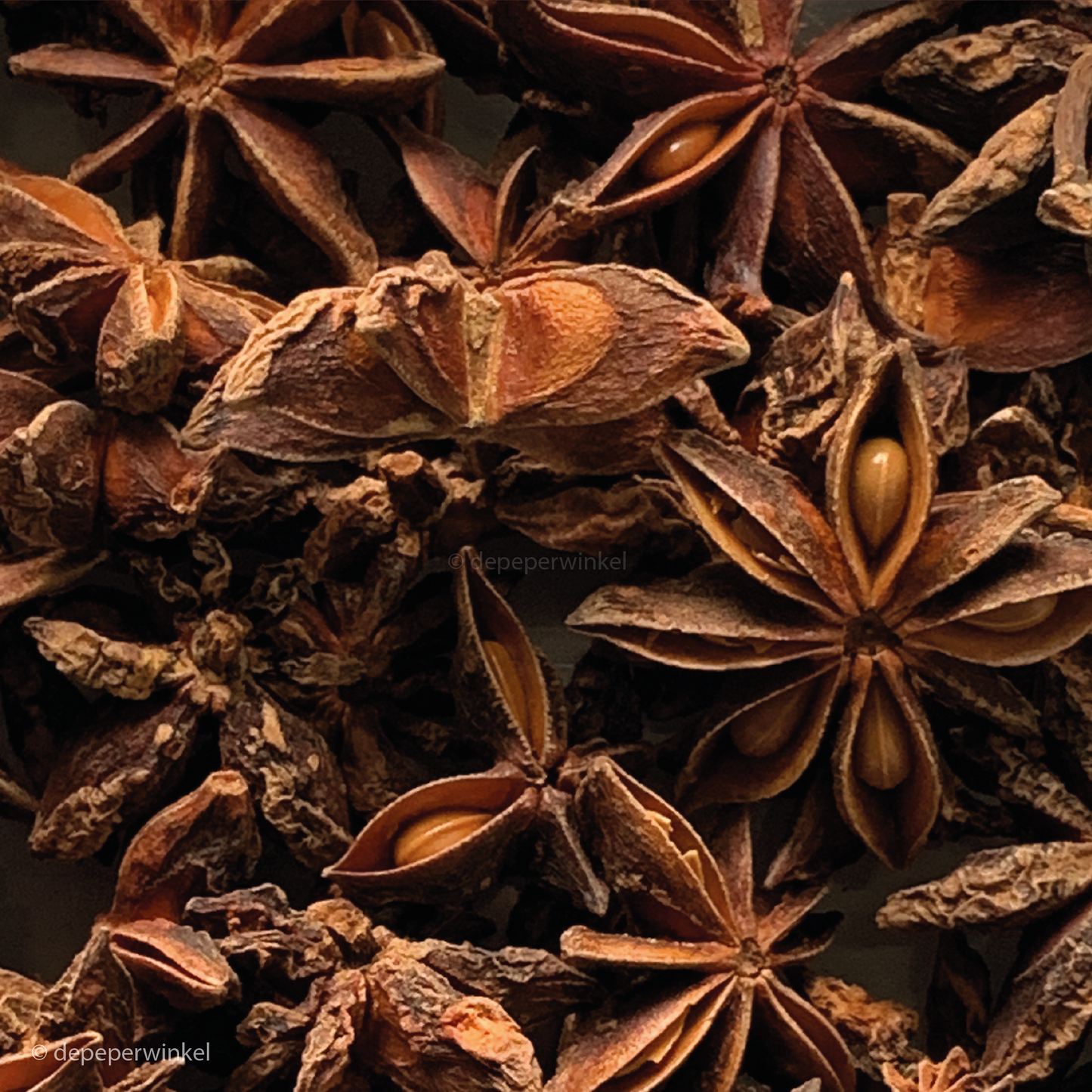depeperwinkel
Star anise
Star anise
In stock
Unable to load availability for pickup
Star anise is, as the name suggests, a star-shaped spice consisting of the fruit pod and the seeds. The fresh, light green fruit is approximately 3.5 cm in diameter and has about eight compartments, or follicles. Each consists of a carpel with a single seam, meaning it opens only on one side, and contains a single, shiny, brown seed.
The fruit is picked when it's dark brown, before it's fully ripe, to prevent the seeds from dropping off. After drying, the carpel appears woody and rock-hard.
The fruits come from the real anise tree or Illicium verum, a ten- to twenty-meter-tall tree with glossy, leathery leaves. It blooms twice a year. Our star anise comes from the mountainous and relatively cool Lang Son region of Vietnam, the tree's natural habitat.
This tree produces fruit from March to April and from August to September. There are two harvests per year, each lasting three to four months, as the fruit must be picked by hand once it is sufficiently ripe.
Star anise is harvested starting in its fifth year. Throughout its productive life, the tree produces an increasingly higher yield, and the quality of the star anise also improves. Trees that are twenty to thirty years old produce the best star anise.
Our star anise is grown and harvested naturally, without the use of chemical fertilizers and/or pesticides.
A piece of history
Star anise came from China via India to the Arab world, where it established a place in Persian cuisine. It wasn't introduced to Europe until the sixteenth century. Europe was introduced to star anise thanks to Thomas Cavendish, who brought the fruit from the Philippines to England in 1578. It would take some time before the first star anise could be purchased there. The first dried star anise was sold in London in 1601.
Soon after, star anise was brought from China via the tea routes through Russia. This is how star anise earned its nickname "Siberian cardamom."
Today, China and Vietnam are the main producing countries, but star anise is also grown in Laos, Korea, Japan and the Philippines.
The Chinese name ba jiao 八角 means "octagonal herb," which is precisely what it is, but in European languages, the shape, flavor, and country of origin are often combined. The sometimes-used name "badian" is derived from the Persian badiyan, which is believed to be derived from the Chinese name ba jiao.
The botanical name Illicium is derived from Latin. Ilicere means allure and refers to its rich flavor.
Smell and taste
Both the carpels and the seeds are aromatic, with the carpels being more aromatic than the seeds. There's no reason to remove the seeds unless your specific goal is to intensify the flavor of a single fruit.
Due to the high content trans-Anethole gives star anise a strong, sweet anise flavor. Pure anethole is more than ten times sweeter than sugar. Star anise contains no sugar. Our Lang son star anise contains over 70% essential oil, of which a whopping 95-98% is trans-Anethole. You'll experience this immediately when the fruit absorbs moisture and releases its full aroma.
In addition to trans-anethole, the essential oil in star anise contains estragole (anise aroma) and limonene (orange aroma), both about 2%, and traces of α-pinene, p-cymene, eugenol, linalool, camphene and β-myrcene.
Common (Spanish) anise (Pimpinella anisum) contains just like star anise trans-anethole, and therefore has a similar flavor, though generally milder. Anise is not related to star anise.the same goes for fennel (Foeniculum vulgare), which also trans-contains anethole.
Usage
Star anise is inextricably linked to Chinese, Taiwanese, and Vietnamese cuisines. Elsewhere in Southeast Asia, star anise plays only a minor role; it's rarely used in Indonesian cuisine, and practically nonexistent in Thai cuisine.
Star anise is used ground or whole, as in red cooking, a Chinese cooking technique. When the whole anise is used, it is discarded after cooking, as in mulled wine and stewed pears.
The flavor palette of star anise is very similar to that of licorice and common anise, and combines well with tomato and basil.
Star anise is used in Italian liqueurs such as Galliano and Sambuca, in absinthe and in French Pastis, and in the following spice blends:
- thirteen spice (5-spice) (China)
- five spice (China)
- garam masala (India)
Broken star anise
In addition to the usual 'stars' we also sell crushed star anise. We haven't intentionally broken the stars, but each shipment contains a small amount of broken material. The flavor is identical, if not more intense, easier to measure due to the breaking, and ideal for drinks, tea, and, like the whole star, soups like pho and sauces.
Features:
- 100% dried fruits of the Illicium verum
- origin: Lang Son, Vietnam
Assortment
- available in glass (45 and 60 grams) and stand-up pouch (no test tubes) contains air.,
- Please note: the jar with 60 grams of star anise contains broken star anise unlike the 45 gram jar that is mainly whole fruits contains !
- larger quantities on request
Gift wrapping
- The jar is available in a tasteful gift packaging, consisting of a cube box filled with black tissue paper.
- For an overview of our gift packaging, please refer to the gift packaging section.
General advice
- You can grind star anise beforehand, but keep in mind that it will quickly lose its aroma; the shelf life of ground star anise is only a few months.
Save:
- store your star anise in a closed container
- preferably store in a dark, dry and cool place
- best before September 2027 (09-2027)
- This expiration date is an indication
Batch number
The batch number helps us track which batch an item originates from. It's listed on the packing slip and invoice.
Share







